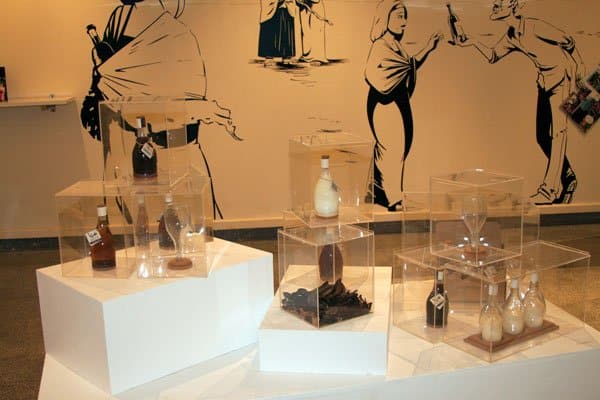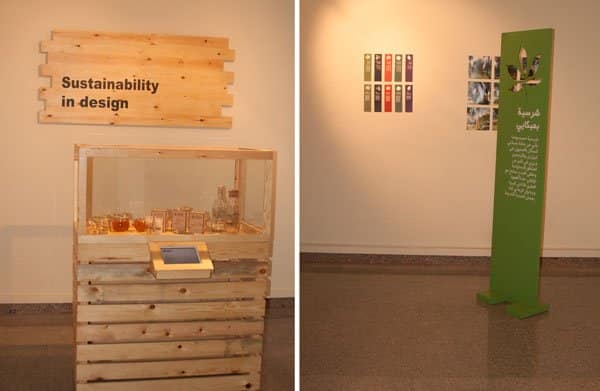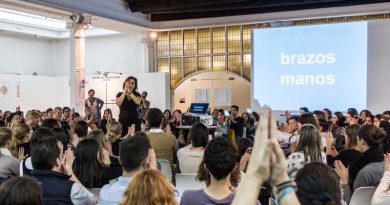The Graphic Design Major in the American University in Cairo: First Generation of Emerging Talent Graduates
New, young talent shined in the hall of the Sharjah gallery in the American University in Cairo (AUC) this week as new graduates gathered to present their final graduation projects to scholars, professionals, colleagues, and families who came to take part of this special moment.
As design education in Egypt and the Middle East is rife with barriers and challenges as discussed in our previous article, Why Design Education in the Middle East Doesn’t Meet the Market Needs, the Graphic Design major in the American University in Cairo is only few years old, and this week marks the graduation of the first batch of students in the major, achieving new success in their lives and in the design industry in Egypt.
The Design Major at the American University in Cairo
The American University in Cairo is one of the oldest academic institutions in the Middle East, founded in 1919 as a private university accredited from both the Middle State Commission on Higher Education (MSCHE) and Egypt’s Authority for Quality and Assessment of Education (NAQAAE). The university didn’t have any design degrees until professor Bahia Shehab—director of the Graphic Design program and the Visual Culture program—established the Graphic Design degree to be provided for AUC students as part of the Department of the Arts, School of Humanities and Social Sciences (HUSS).
The degree is built to fulfill the design industry need of professional designers who are able to blend both theoretical and practical skills in their career life. The degree is currently taught by a distinguished team of full-time faculty, adjunct faculty, and TAs.
The exhibition that was held earlier this week in the AUC new campus was curated by expert curator and design leader, professor Nagla Samir, who contributed with professor Haytham Nawar and professor Bahia Shehab to supervise student projects that reflected the accumulated experience and skills acquired through their study in the major.

Although exhibitions have been hosted on yearly basis to present the student work, this one has its unique characteristics. Students tend to use their design ideas to solve problems in their community and as a means of linking Arabic or Islamic heritage and modern design. This is achieved by analyzing the Islamic arts motifs and elements to adopt them in modern design projects that vary between coin design, interior design, and product designs.
Student Projects
Students got the chance to step beyond the bounds of paper and screens, and brought their projects into the real world. They implemented physical space and mixed media to reflect their design ideas.
Hanya Koweder implemented the light, Arabic calligraphy words to reflect empathy in her small, warm living room that included a table designed from the word “peace” in Arabic and light that spreads around through Arabic calligraphy missed words. Nora Abo Shadi used the space to design a dining room that incorporates the human senses of taste, smell, and vision.

Shrine Osman is another student who highlighted the everyday problems in Egypt, such as poverty, corruption, and homelessness, through designing an experience where viewers can move through the photos that are hidden behind a pattern of abhorrent elements that reflect the suffering faced by poor, homeless people every day.

Sustainability Projects
Sustainable design is still a new discipline in Egypt, as an under-developed country, and was not part of the courses provided by the students. However, three projects showed deep awareness of the importance of implementing sustainable design principle. The first project was exhibited in the middle of the main hall by Yasmine El Balky, who smartly endeavored to invent a sustainable bottle design as part of her package design course. The project aims to design a bottle that is made from recycled glass. The bottle can be transformed into a drinking cup with a unique, vintage design once it is emptied. The project included different bottle sizes and designs that can be adopted for different usages.

The second sustainable project, presented by Mina Zaki, aimed to provide number of sustainable packaging ideas using wood from commonly planted tress in Egypt and recycled materials. Mina’s unique idea represented how to use eco-friendly printing techniques, such as reducing printing ink and using recycled paper and materials in the project’s package design.

The third sustainable project, presented by Sara Azlw, aims to present a new approach to the system of labeling trees. So, the labels are designed to reflect each tree and are installed in a way that enables viewers to learn more information about each tree, including the scientific name and description.
Technology and Digital Media
The technology and digital media was represented in a number of projects that took different approaches. The first project, by Basem El Koury, built a visual communication advertising experience between the drivers on Cairo roads and the billboards installed along the high roads to reflect dynamic advertising campaigns that can display frequent and continuous messages to the travelers in Egypt.

The other digital project was presented by Omar Ashour and aimed to build a Human-Computer Interaction (HCI) using hand movements to control hologram elements.
Incorporating Islamic Art
As the students study the islamic art as part of their Arabic calligraphy classes, number of projects presented new approaches for the Islamic heritage in Egypt and the Middle East which is represented in Aya El Shehaby work that focuses on the Museum of Islamic Art in Cairo and presented a holistic visual branding for it and the Islamic dynasties represented within the museum. Another work is the Accentuation of Memories by Samar Karama which aims to highlight the meaning of the commemorative coins and its role to increase the awareness of Egyptians events, people, groups, and causes such as the breast cancer, Giza Zoo, and the death of iconic film actress Faten Hamama. The coins have been chosen as it serves her goals because they circulate in people’s hand everyday.
“In Accentuation of Memories, I document over 600 coins and divide them into six categories: industrial, governmental, annual, athletic, historical, and symbolic. I create a module that works as a system for all Egyptian commemorative coins in which the obverse is made of illustrations or imagery and the reverse is for inscriptions (square Kufic) inspired by Mamluk’s dynasty’s heraldic devices. The final project is metal-silver 3.5 cm coins. They are made through carving and embossing processes depending on their design.” Samar Karama

The Future of Design in Egypt
Many talents have been presented this day, celebrating a new route in these students’ lives as designers. The above projects and others highlight their skills in both design and research. What makes this graduated batch distinguished is the fulfillment of the design education gap in Egypt and the Middle East, preparing them for employment with a contemporary design degree that implements modern approaches and design curricula.
The graduation of these students marks a milestone that allows us, as educators in this degree, to evaluate the output and learn how to improve the degree in a way that fits and fulfills the local and international market needs.






